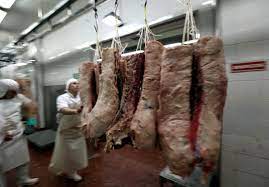Beijing September 28 2021: China’s increasingly strident efforts to curb intensive energy use and hasten carbon emission cuts are prompting petrochemical makers using LPG or naphtha as feedstock to adjust run rates in response to the various impacts the move is having across the petrochemical sector.
The crackdown comes at a time when prices of LNG, a cleaner but costlier alternative to coal as a generating fuel, are rallying ahead of winter and coal usage by households for heating is being prioritized over industrial requirements amid low stockpiles and concerns over generation capacity.
A L S O || R E A D
Government Committed To IMF Program And Hopeful Of Completing Upcoming Review: Finance Minister
The coal shortage is constraining operations in the coal-olefin industry, while higher LNG costs for generation are impacting the economics of petrochemical plants that use other feedstocks.
China’s total electricity consumption rose 13.8% over January-August, outpacing an 11.3% increase in power generation over the same period, National Development and Reform Commission data showed.
The coal-olefin sector has cut runs to reduce intense power usage after the Yuan 126 billion ($19.6 billion) coal-olefins plant in northwest Shaanxi province was suspended for flouting energy consumption limits.
That sector is estimated to account for 20%-25% of China’s polypropylene production. The rest is estimated to come from oil — mainly naphtha cracking at steam crackers — at 55%, with LPG cracking at propane and mixed alkane dehydrogenation plants accounting for 12%-14% and methanol around 6%, according to data from domestic information provider Longzhong and industry sources.
LPG demand from the chemical and petrochemical sectors was estimated to account for more than half of China’s total LPG demand in 2020, Longzhong data showed.
Coal-fired power plants generate around 50% of China’s electricity supply.
Lower PP output
Reduced PP production from coal-olefin plants could result in higher PP margins, which could theoretically provide more market share for the LPG cracking sector, including PDH plants and boost LPG demand by 10%, a trade source with China Gas said.
However, operating rates at some PDH plants, especially those in eastern Jiangsu and southern Guangdong provinces, are also expected to be affected by local governments’ power-rationing policies, market sources said.
The NDRC has alerted 10 provinces or regions including Guangdong, Jiangsu, Yunnan, Fujian, Shaanxi, Guangxi, Ningxia, Qinghai, Xinjiang and Hubei that they have not met energy-consumption targets for the first half of 2021.
Guangdong recently imposed a new round of power rationing on industrial users, cutting their power supply for 4-5 days a week, according to a report by the province’s development and reform commission Sept. 25.
Dongguan Juzhengyuan in Guangdong shut its PDH plant for four days in September due to power rationing, reducing its operating rate to 69.75% from full capacity in August, according to domestic energy information provider JLC.
Jiangsu has also enforced power rationing on industrial users, supplying power for two days and cutting supply for two days, local media reported.
Oriental Energy has lowered the operating rate at its Zhangjiagang PDH plant in Jiangsu in September due to power rationing, market sources said.
Crunching margins were also constraining operating rates at many PDH plants. Their LPG feedstock import costs have risen significantly in recent months, while the domestic price of their propylene has lagged far behind amid weak demand from downstream plants.
Chemical and petrochemical plants are also considered energy-intensive enterprises and their operating rates have been limited or cut by some local governments, domestic media reported.
“We are still watching for more government announcements regarding the power cut issue,” an industry source said. “So far we are not expecting much impact on the PDH side, more on the coal-to-olefin side. As for crackers/PDH plants, as long as they are not under maintenance or facing technical issues, they will be running at maximum rates.”
LPG demand boost
But another trade source said power cuts by provinces and shrinking margins had prompted SP Chemical to lower operating rates at its 700,000 mt/year LPG-based cracker at Taixing in Jiangsu to 60-70% of capacity, while a company source said Jiangsu Sailboat Petrochemical was delaying the restart of its methanol-to-olefins plant.
The trade source said major petrochemical producers that were able to afford and procure alternative generating fuel such as LNG or Russian piped gas – as happened in 2018 – could boost operating rates at PDH plants or steam crackers to leverage the prospects of higher PP margins.
Soaring LNG prices have encouraged some factories, mostly ceramic makers, to switch to LPG as burning fuel from natural gas. This was expected to lift LPG demand to a limited extent, a trade source in Shanghai said.
Natural gas demand from the power generation sector was estimated to comprise 16% of China’s total gas demand in 2020, National Energy Administration data showed.
Regional LPG prices hovering near seven-year highs have prompted some ethylene producers to switch to cheaper naphtha as feedstock, though this is estimated to reduce LPG demand by less than 10%, another source said.
“The strength of naphtha is because of expensive LPG. There is more demand from petrochemical producers as they are cutting their use of butane and propane in cracking,” a Singapore-based naphtha trader said.
But one Chinese petrochemical source said trading firm Unipec was heard buying less naphtha than in previous years, and increasing imports of light crude.
till watching for more government announce…











